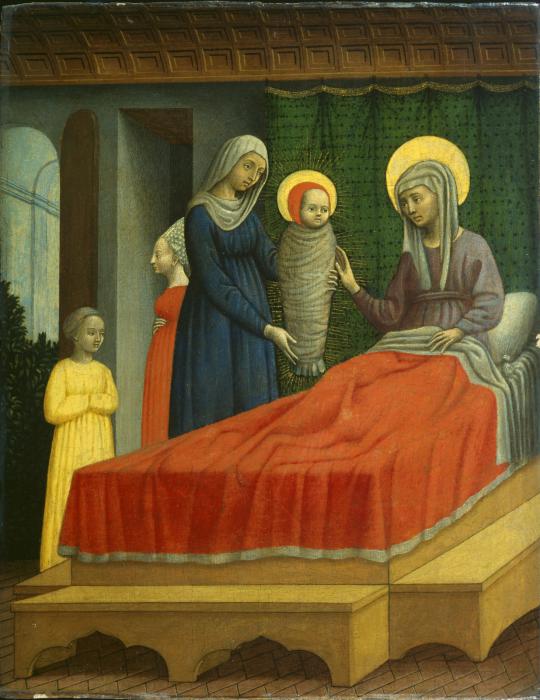
Birth of Saint Augustine ca. 1440–1450
Antonio Vivarini
Among the many paintings that celebrate the advent of a new life, this one by the talented Venetian artist Antonio Vivarini (1418-1484) is perhaps the most colorful. Now shown at the Courtauld Gallery in London, “Birth of Saint Augustine” displays in colorful palette the saintly figures wearing bright yellow halos, the mother covered with a blanket painted in dazzling red colors. The baby, tightly swaddled according to the custom of the time, would clearly be unable to replicate the feat of his later fellow in trade Saint Nicolas of Bari and stand up in his bath as soon as he was born.
As far as we know, the saintly Augustine was the product of a non-eventful birth, not rising from the foam of the sea, from his father’s head or thigh, his mother’s left ear or heel, his nurse’s slipper, the bark of a tree, nor the shell of an egg. No miracles were observed, no new star appeared in the sky, and nobody came to bend low and kiss the baby’s feet. From the clinical point of view, as Frank Gonzalez-Crussi recently noted, childbirth is indeed “a bloody, messy affair . . . a brutal separation of two beings.” Augustine himself had nothing to say about the circumstances of his birth in his autobiography, merely mentioning elsewhere that, to put it politely and eschew the Latin, we are born between the two major excretory systems of the human body.

Leave a Reply